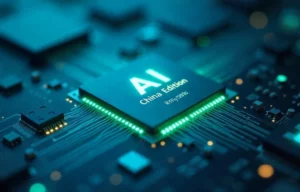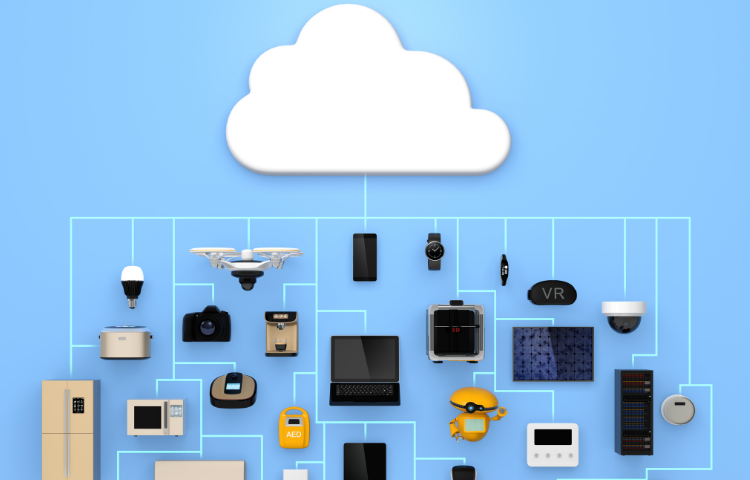

Prefer to listen instead? Here’s the podcast version of this article.
Have you heard the term Internet of Things (IoT) thrown around in an article or YouTube video? Maybe you vaguely know what it means but can’t quite explain it yourself. If that is the case, do not worry, we have you covered.
At its most basic level, the Internet of Things is any device that can be connected to the internet. Examples of this include iPhones, thermostats, laptops, coffee machines, refrigerators, lights, cars, and many more common devices.
New devices are consistently popping up that are part of the Internet of Things, and this trend is only increasing. In fact, it is estimated that by 2021, there will be 35 billion Internet of Things devices connected around the world.
Now that we know a few examples of devices that are part of the Internet of Things, let’s figure out how this technology impacts the average consumer. The Internet of Things makes human’s lives easier and more efficient. This is because when a device is connected to the Internet of Things, it can essentially provide another connected device with data or a command.
For example, if someone’s phone alarm goes off at 7 a.m., the phone could also be programmed to turn the coffee machine on and start brewing. Then, when hopping in the car to drive to work, the driver’s digital schedule can be synched to the vehicle, allowing the car’s GPS to pre-determine the best route. Convenient right?
Businesses around the globe rely on the Internet of Things to make their daily operations more efficient. With industries ranging from agriculture to healthcare, find out how the Internet of Things is being used to create everyday solutions.
1. Retail
The retail industry is currently in the middle of a massive transition towards eCommerce due to the pandemic. However, physical stores are still finding ways to benefit from the Internet of Things. For more information on how social distancing guidelines will accelerate the adoption of existing technologies and transform consumer habits, check out our article here.
Beacons
First off, what is a beacon? As described by WordSteam, “Beacons are small, wireless transmitters that use low-energy Bluetooth technology to send signals to other smart devices nearby.”
Retail companies find beacons especially useful since they are location-based. For example, companies can send notifications to consumers’ smartphones when they are within a pre-determined distance of a brick-and-mortar store. The notifications could be coupons, new inventory alerts, store hours, or other information that might entice a passerby to stop in and make a purchase. Macy’s, CVS, Target, and Urban Outfitters have all leveraged beacons to encourage sales.
2. Shipping and Delivery
With more consumers online shopping due to the pandemic, there has been a huge influx of home deliveries.
Sensors
With eCommerce exploding, tracking packages is vital for businesses and everyday consumers. Sensors can be placed on the packages and transmit location data, along with the estimated delivery time. The same sensors can also analyze other factors, such as temperature and vibration level, which is exceptionally beneficial when shipping fragile items or food.
UPS adds sensors to packages that are part of its medical package service, UPS Premier. Since medicine, medical devices, and laboratory specimens can be vital to an individual’s health and well-being, the sensors placed on these packages allow UPS employees to track the shipment to any location, not just the nearest check-point the package went through.
3. Health
Treatment for health conditions is becoming more accurate and convenient by incorporating the Internet of Things.
Health Monitors
These devices can save individuals’ lives by tracking and notifying patients when blood pressure and blood sugar levels are out of the normal range. The monitors can also be programmed to send the data they collect directly to patients’ doctors, providing in-depth analyses. Companies that make these advanced health monitors include Dexcom and Eversense. These health monitors can be wearable and may even look identical to smartwatches, thus adding greater privacy and discretion.
4. Agriculture
Humans have been optimizing food production for thousands of years, and we are currently the most hands-off in history.
Greenhouse Sensors
Growing plants and food require precise environmental conditions, so the more control over the environment, the greater the chance of a successful harvest. However, instead of having a person manually adjust the greenhouse climate, intelligent sensors can now handle the tasks. Automated sensors analyze the greenhouse’s climate and adapt it to meet the plants’ ideal requirements, thus removing the need for human intervention.
These smart sensors can also be placed in grocery stores to ensure perishable foods are kept in proper climates. Supermarket chain, Kroger, began implementing these smart sensors into stores back in 2015 and has since been expanding the sensors to other stores. These sensors have removed the need for employees to check the temperatures of the produce, fridge, and freezer sections multiple times per day. Lastly, the sensors regulate the temperature continuously, thus keeping food at more level and ideal temperatures around the clock.
The Internet of Things is a continually evolving technology, with new devices and capabilities being created regularly. This accessible technology changes the way consumers and businesses perform everyday tasks, even if people are unaware they are utilizing the technology. With millions of devices being added to the Internet of Things yearly, it will be interesting to see how the Internet of Things shapes our everyday lives in the future.
WEBINAR